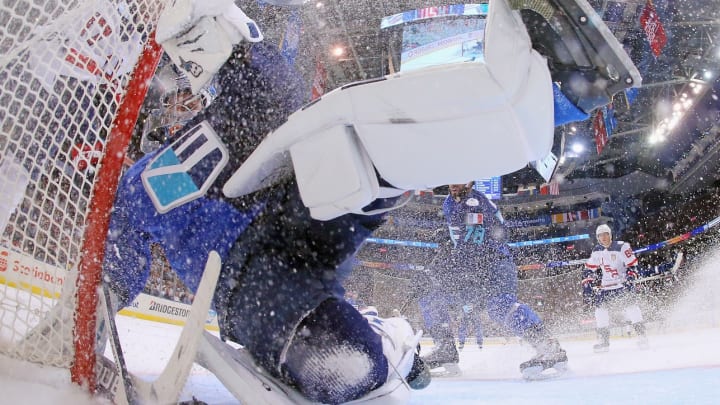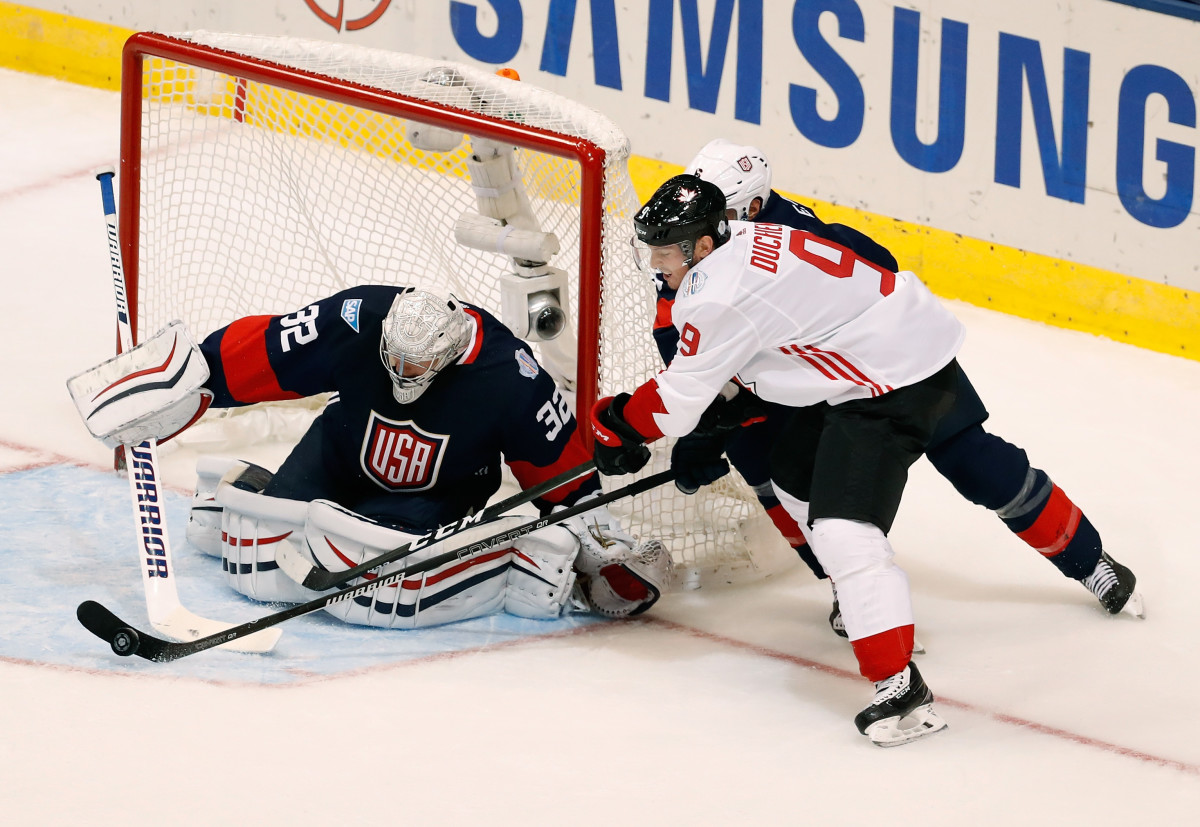World Cup of Hockey Nearing Finale


Imagine seeing reigning NHL MVP Patrick Kane, T.J. Oshie, Ben Bishop, Jonathan Quick, Cory Schneider, and Joe Pavelski sharing the same ice. On September 13, I took a trip to the Verizon Center in Washington, D.C., to see Team USA’s final tune-up game for the World Cup of Hockey, which is now nearing its end. Canada, which leads the final best-of-three series 1–0, plays Team Europe Thursday for a chance to win the whole thing.
You may be wondering, “What is Team Europe?” And, “What, exactly, is the World Cup of Hockey?”
Let me go back a few decades to explain.
Many years ago the Canada Cup was an international ice hockey tournament held in — you guessed it! — Canada. It was created because, at the time, both the Olympics and the Hockey World Championships were amateur competitions, meaning that NHL players couldn’t play in them.
Hockey fans wanted a real world championship where the best players in the world could play, regardless of whether they were pro or amateur. It would take place in the NHL off-season. The Canada Cup began in 1976, happening every three or four years with six teams in each tournament. The main competitors were Canada, the Soviet Union, Czechoslovakia, America, Finland, and Sweden. Held five times, Canada won four times and the Soviet Union won once. It was last held in 1991.
Flash forward to 1996, and the first World Cup of Hockey was held with eight competitors. The six teams from the Canada Cup were back, with the addition of Germany and Slovakia. The United States went on to beat Canada in the championship to take home the first World Cup of Hockey title.
In 2004, Canada won. Two days afterward, the NHL announced a lockout of the 2004–05 season because owners and players couldn’t agree on how players should be paid. Although the NHL resumed the next year, the World Cup never came back.
That is, until January of last year, when it was announced that the World Cup would return in 2016. Now you’re up to date!
But that doesn’t explain why I was in D.C. watching a game for a tournament held in Canada. Well, I watched the United States crush Finland in an exhibition game for the World Cup, which began on September 17. The teams at the beginning of the tournament were Canada, the United States, Russia, Sweden, Finland, the Czech Republic, Europe, and North America.

Back to another of your original questions: Why are there teams from European countries but also a Team Europe? Team Europe is for players who are from a European country that doesn’t have a team in the World Cup. Team North America is for players from North America who are 23 years old or younger.
The Verizon Center was one of 10 venues hosting preseason games for the World Cup of Hockey. Three of those venues were in the U.S., three were in Canada, and four were in European cities.
Asked what it’s like to represent his country, Washington Capitals and Team USA defenseman John Carlson responded, “It's a great honor. You don't get to do it too often, so when you get the chance you really relish the opportunity, and it really is great to be around the greatest players from your country and play with them.”
Another Caps player, T.J. Oshie, answered, “It feels great, just throwing the jersey on. There's a lot of pride that goes with that.”
Team USA expected the competition to be fierce, and it was. “I think our biggest rival is Canada,” Kane said beforehand. “Canada won the last couple Olympics, and is the biggest rival of the U.S., so it will be fun to play them.”
Well, in the end, nothing about the World Cup of Hockey was fun for Team USA, which lost all three of its games and came in seventh, behind every team but Finland.
United States coach John Tortorella, who is also the Columbus Blue Jackets coach, had expected a challenge. “What's hard about coaching a team of All-Stars, is trying to find everyone their ice time,” he said before the tournament began. “These players are the best players on their NHL team, and they're used to playing 18 or 20 minutes a game, and they want that here too, but I can't find the ice time for them. The most important thing about the tournament is our players need to embrace their role and do big things with the minutes that they have.”
Now it’s up to Canada to do big things, if the host country wants to hoist the trophy. Tune in Thursday night at 8 p.m. ET on ESPN2.
Photographs by (from top): Bruce Bennett/Getty Images, Gregory Shamus/Getty Images
